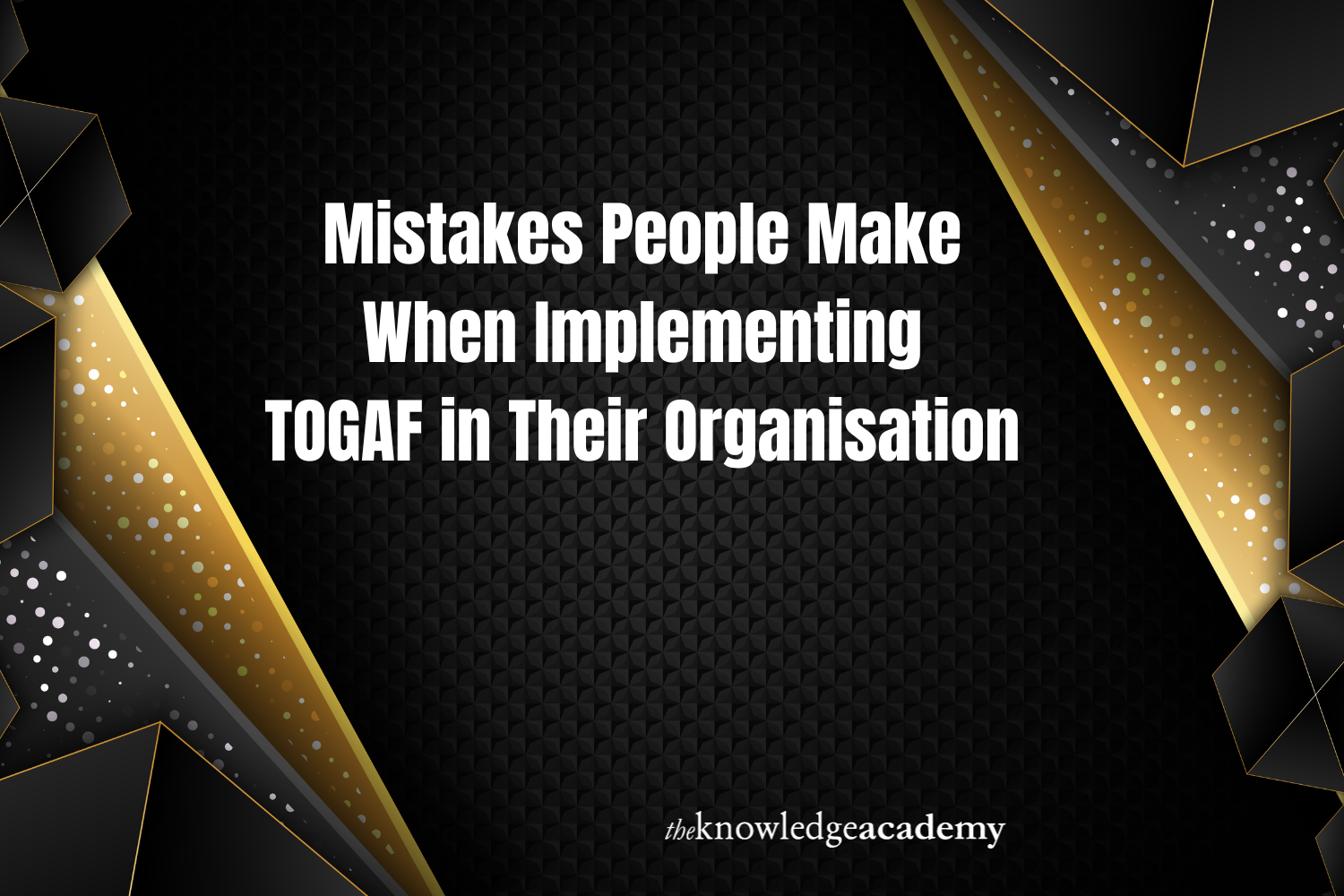Beginning a TOGAF implementation is like setting the foundation for a high-performing, future-ready organisation. The TOGAF framework offers unparalleled tools to align IT strategies with business goals, paving the way for sustainable growth and innovation. Yet, despite its potential, many organisations stumble due to avoidable mistakes such as underestimating stakeholder involvement or overcomplicating processes. These mistakes can derail even the most promising initiatives, turning a strategic advantage into an operational headache.
By addressing these mistakes through TOGAF Training and adhering to TOGAF Architecture Principles, organisations can unlock its full potential, transforming organisational success.
Table of Contents
- Common Mistakes in TOGAF Implementation
- Conclusion
Common Mistakes in TOGAF Implementation
Below are the common mistakes organisations face during TOGAF implementation:
Insufficient Stakeholder Involvement: TOGAF is success largely depends on departmental cooperation; however, many organisations undervalue the significance of stakeholder engagement. Resistance to change is unavoidable when important stakeholders are not included. This lack of support frequently results in misconceptions regarding the programmes goals and advantages.
For example, the resultant architecture might not meet important business goals if IT teams proceed with TOGAF deployment of TOGAF without consulting business leaders. On the other hand, excluding IT specialists from strategic talks may result in irrational demands and unworkable solutions.
Overcomplication of the Framework: Organisations not experienced with enterprise architectural frameworks may find the thorough approach to TOGAF and copious documentation daunting. Trying to apply TOGAF in its entirety without considering the organisation’s capability and maturity level is a typical error.
As a result of this overcomplication, teams frequently feel overburdened by pointless procedures and paperwork. They become mired down by trying to strictly follow the framework’s processes rather than concentrating on significant outcomes.
Neglecting the Architecture Vision: A fundamental stage of the TOGAG Architecture Development Method (ADM), the Architecture Vision offers a high-level summary of the intended results and objectives. Nevertheless, many organisations neglect this stage or don’t give it the consideration it needs.
Without a clear vision, the implementation process may become distracted. Teams could work on unrelated projects that don’t advance the main goals. The Architecture Vision acts as a road map, directing choices and guaranteeing that business and IT strategies align.
Overemphasis on Tools: Enterprise architecture development greatly benefits from tools and software, but an excessive dependence on them may distract from the framework’s fundamental ideas. Some organisations make significant investments in architecture tools without completely comprehending how they fit into the TOGAF methodology.
This tool-focused approach can result in a “checklist mentality,” where teams prioritise tool usage over significant results. Ultimately, enterprise architecture is not about being an expert with a certain tool but rather about matching IT systems with business objectives.
Inconsistent Application of TOGAF: The TOGAF framework is adaptable and can be customised to meet the requirements of any organisation. On the other hand, if its ideas are applied inconsistently, silos and inefficiencies may result. For instance, disparate departments’ interpretations of TOGAF may lead to disjointed efforts that fall short of a unified corporate architecture.
Organisations frequently undervalue the importance of establishing a standardised approach to TOGAF. Without consistency, teams might operate against each other, lessening the initiative’s efficacy.
Ignoring Change Management: Many TOGAF implementations overlook this crucial component, even though enterprise architecture initiatives sometimes include substantial organisational transformation. Resistance to change is normal, particularly when new procedures and systems interfere with long-standing workflows.
When organisations neglect change management, they risk alienating staff members and erecting obstacles to adoption. This mistake might result in delays, decreased productivity, and a lack of faith in the initiative’s objectives.
Unrealistic Expectations: Lastly, organisations often underestimate the time, effort, and resources needed for a successful TOGAF deployment. They ignore the framework’s complexity and the requirement for sustained dedication in favour of expecting immediate results.
This unrealistic approach frequently results in dissatisfaction and despair when development is slower than expected. TOGAF is a strategic framework requiring meticulous preparation, implementation, and continuous improvement; it is not a panacea.
Conclusion
Implementing TOGAF can help an organisation achieve sustainable growth and match IT strategy with business objectives. Nevertheless, the procedure is difficult, and even the best-laid plans can fail due to errors.
Organisations should proactively address mistakes like unclear objectives, lack of stakeholder involvement, and overcomplication to ensure successful TOGAF implementation. With free resources from The Knowledge Academy, they can create a roadmap that delivers real value and aligns with unique business needs.
